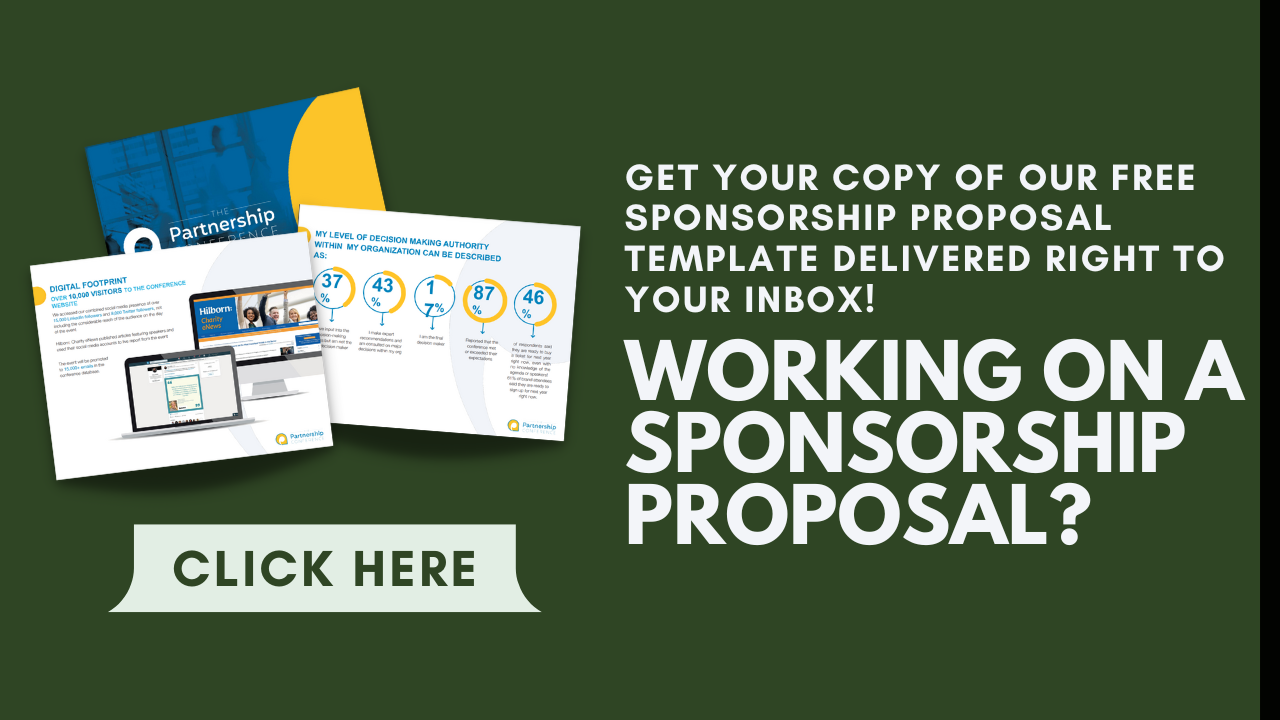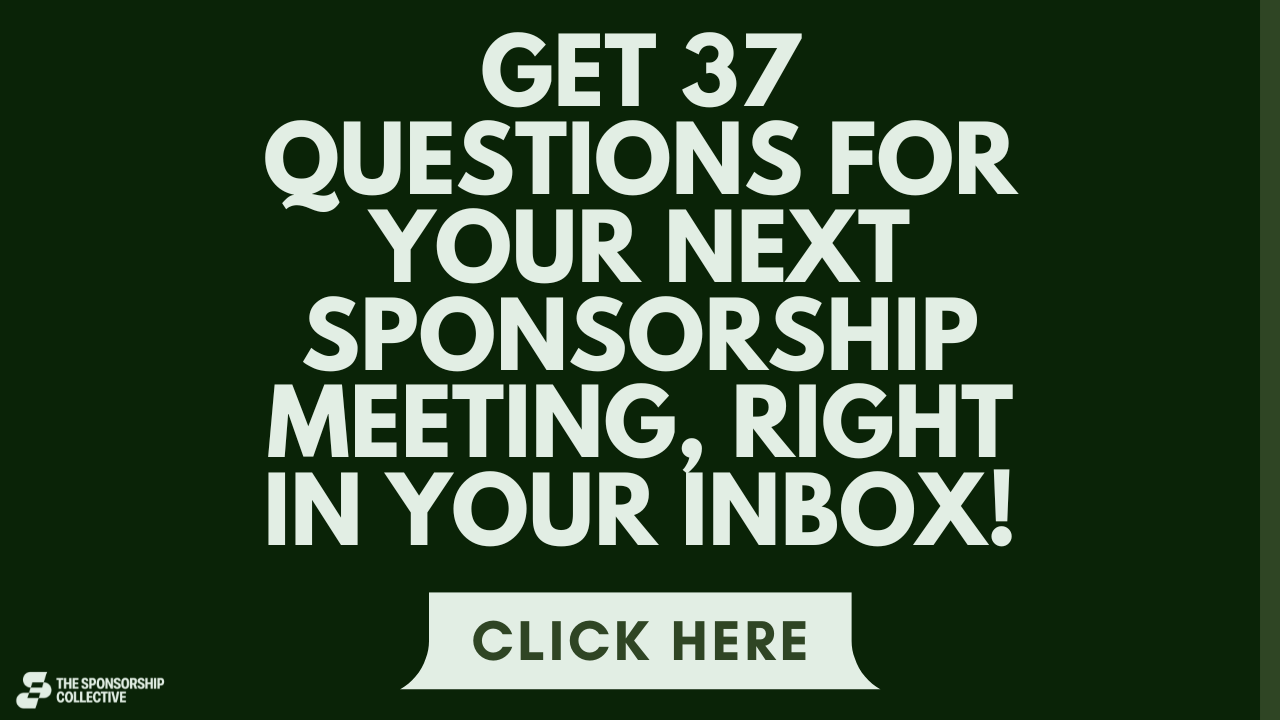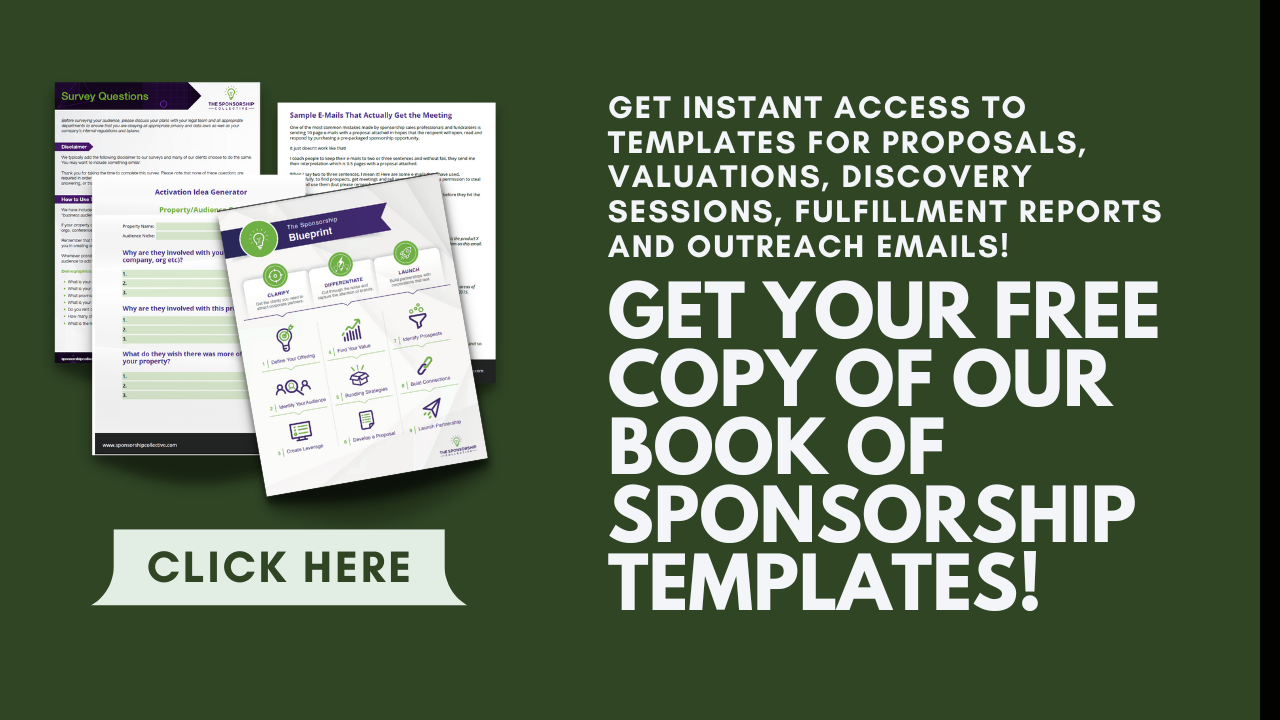Sponsorship prospecting is one of the areas that sponsorship seekers usually struggle with, which is fair. Determining which companies to reach out to versus those not to requires a keen sense that you’ll finesse the more you use it.
In this post, I’ll help you develop that sense by going over an exercise I use with my clients for easy sponsorship prospecting.
Let’s get started.
Run Out of Prospects Already? Try My Sponsorship Prospecting Exercise
Whether you already think you have a good number of potential sponsorship prospects or you’re worried that you have too few, this exercise can help. It’s one of the first things I do when I sit down with new clients, as it will reveal your true number of available sponsorship prospects.
My advice? Be ready for a lot more prospects than you think you have! I’m not kidding. I’ve had clients of mine who have had to hire prospect researchers to get through their respective prospect volume.
The exercise relies on the concentric circle theory. What is the concentric circle theory, you ask? Allow me to explain.
The concentric circle theory puts your most high-value idea or point in the center and then expands from there. The result is like when you throw a rock in the water and see a ripple effect.
So for our purposes, you want the hottest, warmest sponsorship prospects in the center of your concentric circle. Then, as the circle expands, the prospects get cooler.
The First Circle – Your Warmest Prospects
Okay, you’re saying. The concentric circle theory makes sense, but how the heck do you know who your hottest prospects are?
You have to survey to find them. That’s something you should have done already by issuing your audience survey.
If you need a recap, the audience survey is full of pertinent questions you ask to glean important information about your audience. This information then allows you to segment your audience geographically, demographically, and by psychographic data.
I always recommend niching down your audience as much as you can, but that’s a topic for another post.
The link I provided in the paragraphs above will tell you everything you need to know about putting together an audience survey, asking the right questions, incentivizing your audience to take the survey, and tabulating the results.
Now, you’re probably wondering what your audience data has to do with your sponsorship prospects. Well, if you’re asking the right kinds of questions on your survey, then you’re learning about the brands your audience likes the most and spends a lot of their money on.
These brands are your warmest prospects. You already know your audience uses and enjoys these brands, so if you strike up a sponsorship deal with one of these companies, your audience will be more receptive.
That can lead to your sponsor achieving more of their goals, such as higher sales, more customers, greater web/social traffic, etc.
Warm prospects don’t only have to be brands that your audience already purchases from, but those that they intend to purchase from as well.
One of the best and most telling questions you can ask on your audience survey is which brands does your audience plan to purchase from in the next 18 months.
Your list of hot sponsorship prospects could be as many as 20 or 30 brands, which is a lot!
The Second Circle – Brands That Market/Advertise to Your Audience
Like you get bombarded with thousands of advertisements a day, so too does each member of your audience. You need to have a better understanding of those brands, and again, that goes back to your audience survey.
You can ask them something like, “which 5 to 10 brands that have advertised or marketed to you in the last 12 months stand out the most?”
As you begin to go through your audience survey results, you’ll start noticing the same brand names pop up more and more.
I recommend making a spreadsheet of all the brands your audience members list in the survey. Then calculate which brand gets the most mentions versus those that gets the least. Categorize your spreadsheet by the most popular brands versus the least popular ones. Go after those popular prospects.
You can also quiz your audience on the media they’re consuming or what they’re reading. Then you have to watch/read/consume that media yourself to see which brands are advertising to that audience.
As a third option, you can create customer avatars, which are amalgamations of personality traits that you notice among your audience segments.
For example, maybe one segment spends money readily while another is a lot more cautious about their purchasing decisions. You can create customer avatars for both. Then you want to determine what kinds of companies would advertise to each avatar.
That group of brands at the top of the list goes into this second circle. Depending on the size of your audience, you could get another dozen or so brands to explore here.
The Third Circle – Brands That Should Be Interested in Your Audience
By this stage of the game, you know your audience quite well. Thus, you won’t have a hard time determining the brands that should be interested in your audience.
You’re not doing any surveying at this point, so the interest of these brands isn’t guaranteed. I want to make that clear. These are, again, brands that should be interested in your audience, not brands that necessarily are interested.
How do you find these brands? Branch off from the second circle of sponsorship prospects.
I’ll use an example. If your audience is really interested in iPhones, then you can assume they like smartphones and tech companies.
That means companies like Android, Samsung, Blackberry, Amazon, and Google should be interested in your audience.
I like to call these brands possible interest brands. Here’s a fun fact: when engaging in sponsorship prospecting, most sponsorship seekers–especially first-time ones–tend to start with possible interest brands.
It could be that they didn’t do their audience research yet or they just don’t know otherwise. This is a problem though. Possible interest brands by their very name are only potentially interested in your audience.
There should be alignment between what the brand sells and what your audience purchases, but you’re not 100 percent certain if there is with these brands. By pursuing these sponsorship prospects, you can get a lot of rejections or even radio silence.
That makes you think your sponsorship prospecting methods aren’t working when you’re just starting from the wrong point of the concentric circle.
The Fourth Circle – Direct Competitors of All Other Circles
If by this point, you only have 40 to 60 sponsorship prospects, here’s where the list is really going to fill in. You could soon end up with hundreds upon hundreds of prospects, sometimes more than you know what to do with.
The fourth and last circle includes the direct competitors of your warm prospects, the brands that advertise to your audience, and the brands that could be interested in your audience.
Yes, this phase is going to be research-heavy; there’s no other way around that. Using the phone example again, if your audience loves Apple phones, then those other brands I listed are direct competitors. Of course, those aren’t the only companies competing for the market share of smartphone users.
There’s also OnePlus, Huawei, Vivo, Motorola, LG, and Nokia. You want all the direct competitors, so that would mean researching every smartphone brand out there that’s competing against iPhones.
These prospects are the coldest since you can’t say for sure whether they’ve marketed or advertised to your audience because you’re also uncertain if they’re interested in your audience. However, the weakest category of prospects is the third circle, not the fourth.
Conclusion
If you’re struggling with sponsorship prospecting, it’s likely because you’re starting with brands that should be interested in your audience rather than the brands your audience reliably buys from, consumes media from, and interacts with.
With my sponsorship prospecting exercise, you can define your hot prospects and start seeing your list of sponsorship prospects double or even triple. Even better is that the prospects will be higher quality.
If you’re struggling with this or other areas of your sponsorship program, I highly recommend checking out my free training called How to Grow Your Sponsorship Program. You’ll learn how to build partnerships with sponsors and the decision-making sponsor companies use to determine who they’ll work with.
- About the Author
- Latest Posts
Chris Baylis is the Founder and Editor-in-Chief of The Sponsorship Collective.
After spending several years in the field as a sponsorship professional and consultant, Chris now spends his time working with clients to help them understand their audiences, build activations that sponsors want, apply market values to their assets and build strategies that drive sales.
Read More about Chris Baylis




